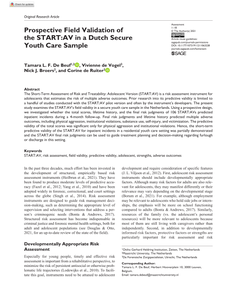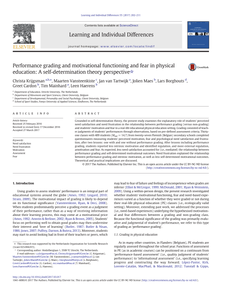Current research on data in policy has primarily focused on street-level bureaucrats, neglecting the changes in the work of policy advisors. This research fills this gap by presenting an explorative theoretical understanding of the integration of data, local knowledge and professional expertise in the work of policy advisors. The theoretical perspective we develop builds upon Vickers’s (1995, The Art of Judgment: A Study of Policy Making, Centenary Edition, SAGE) judgments in policymaking. Empirically, we present a case study of a Dutch law enforcement network for preventing and reducing organized crime. Based on interviews, observations, and documents collected in a 13-month ethnographic fieldwork period, we study how policy advisors within this network make their judgments. In contrast with the idea of data as a rationalizing force, our study reveals that how data sources are selected and analyzed for judgments is very much shaped by the existing local and expert knowledge of policy advisors. The weight given to data is highly situational: we found that policy advisors welcome data in scoping the policy issue, but for judgments more closely connected to actual policy interventions, data are given limited value.
LINK
The Short-Term Assessment of Risk and Treatability: Adolescent Version (START:AV) is a risk assessment instrument for adolescents that estimates the risk of multiple adverse outcomes. Prior research into its predictive validity is limited to a handful of studies conducted with the START:AV pilot version and often by the instrument’s developers. The present study examines the START:AV’s field validity in a secure youth care sample in the Netherlands. Using a prospective design, we investigated whether the total scores, lifetime history, and the final risk judgments of 106 START:AVs predicted inpatient incidents during a 4-month follow-up. Final risk judgments and lifetime history predicted multiple adverse outcomes, including physical aggression, institutional violations, substance use, self-injury, and victimization. The predictive validity of the total scores was significant only for physical aggression and institutional violations. Hence, the short-term predictive validity of the START:AV for inpatient incidents in a residential youth care setting was partially demonstrated and the START:AV final risk judgments can be used to guide treatment planning and decision-making regarding furlough or discharge in this setting.
DOCUMENT

Using path analysis, the present study focuses on the development of a model describing the impact of four judgments of self-perceived academic competence on higher education students' achievement goals, learning approach, and academic performance. Results demonstrate that academic self-efficacy, self-efficacy for self-regulated learning, academic self-concept, and perceived level of understanding are conceptually and empirically distinct self-appraisals of academic competence which have a different impact on student motivation, learning, and academic performance. Furthermore, the current study suggests that students reflecting high scores on the four measures of self-perceived competence, are more persistent, more likely to adopt mastery and/or performance approach goals, less anxious, process the learning material at a deeper level, and achieve better study results. However, this study also warns that high self-perceived competence (e.g., perceived level of understanding), if not accompanied by a mastery goal orientation, can turn into overconfidence resulting in lower persistence levels and poorer study results.
LINK
PURPOSE: The Nasality Severity Index 2.0 (NSI 2.0) forms a new, multiparametric approach in the identification of hypernasality. The present study aimed to investigate the correlation between the NSI 2.0 scores and the perceptual assessment of hypernasality. METHOD: Speech samples of 35 patients, representing a range of nasality from normal to severely hypernasal, were rated by four expert speech-language pathologists using visual analogue scaling (VAS) judging the degree of hypernasality, audible nasal airflow (ANA) and speech intelligibility. Inter- and intra-listener reliability was verified using intraclass correlation coefficients. Correlations between NSI 2.0 scores and its parameters (i.e. nasalance score of an oral text and vowel /u/, voice low tone to high tone ratio of the vowel /i/) and the degree of hypernasality were determined using Pearson correlation coefficients. Multiple linear regression analysis was used to investigate the possible influence of ANA and speech intelligibility on the NSI 2.0 scores. RESULTS: Overall good to excellent inter- and intra-listener reliability was found for the perceptual ratings. A moderate, but significant negative correlation between NSI 2.0 scores and perceived hypernasality (r=-0.64) was found, in which a more negative NSI 2.0 score indicates the presence of more severe hypernasality. No significant influence of ANA or intelligibility on the NSI 2.0 was observed based on the regression analysis. CONCLUSION: Because the NSI 2.0 correlates significantly with perceived hypernasality, it provides an easy-to-interpret severity score of hypernasality which will facilitate the evaluation of therapy outcomes, communication to the patient and other clinicians, and decisions for treatment planning, based on a multiparametric approach. However, research is still necessary to further explore the instrumental correlates of perceived hypernasality. LEARNING OUTCOMES: The reader will be able to (1) describe and discuss current issues and influencing variables regarding perceptual ratings of hypernasality; (2) describe and discuss the relationship between the Nasality Severity Index 2.0, a new multiparametric approach to hypernasality, and perceptual judgments of hypernasality based on visual analogue scale ratings; (3) compare these results with the correlations based on a single parameter approach and (4) describe and discuss the possible influence of audible nasal airflow and speech intelligibility on the NSI 2.0 scores.
DOCUMENT
In recent years, the fight against terrorism and political violence has focused more on anticipating the threats that they pose. Therefore, early detection of ideas by local professionals has become an important part of the preventive approach in countering radicalization. Frontline workers who operate in the arteries of society are encouraged to identify processes toward violent behavior at an early stage. To date, however, little is known about how these professionals take on this screening task at their own discretion. Research from the Netherlands suggests that subjective assessment appears to exist. In this article, we argue that the absence of a clear norm for preliminary judgments affects prejudice or administrative arbitrariness, which may cause side effects due to unjustified profiling.
DOCUMENT

There is emerging evidence that the performance of risk assessment instruments is weaker when used for clinical decision‐making than for research purposes. For instance, research has found lower agreement between evaluators when the risk assessments are conducted during routine practice. We examined the field interrater reliability of the Short‐Term Assessment of Risk and Treatability: Adolescent Version (START:AV). Clinicians in a Dutch secure youth care facility completed START:AV assessments as part of the treatment routine. Consistent with previous literature, interrater reliability of the items and total scores was lower than previously reported in non‐field studies. Nevertheless, moderate to good interrater reliability was found for final risk judgments on most adverse outcomes. Field studies provide insights into the actual performance of structured risk assessment in real‐world settings, exposing factors that affect reliability. This information is relevant for those who wish to implement structured risk assessment with a level of reliability that is defensible considering the high stakes.
DOCUMENT

Following the rationale of the current EU legal framework protecting personal data, children are entitled to the same privacy and data protection rights as adults. However, the child, because of his physical and mental immaturity, needs special safeguards and care, including appropriate legal protection. In the online environment, children are less likely to make any checks or judgments before entering personal information. Therefore, this paper presents an analysis of the extent to which EU regulation can ensure children’s online privacy and data protection.
DOCUMENT

Grounded in self-determination theory, the present study examines the explanatory role of students' perceived need satisfaction and need frustration in the relationship between performance grading (versus non-grading) and students' motivation and fear in a real-life educational physical education setting. Grading consisted of teacher judgments of students' performances through observations, based on pre-defined assessment criteria. Thirty-one classes with 409 students (Mage = 14.7) from twenty-seven Flemish (Belgian) secondary schools completed questionnaires measuring students' perceived motivation, fear and psychological need satisfaction and frustration, after two lessons: one with and one without performance grading. After lessons including performance grading, students reported less intrinsic motivation and identified regulation, and more external regulation, amotivation and fear. As expected, less need satisfaction accounted for (i.e., mediated) the relationship between performance grading and self-determined motivational outcomes. Need frustration explained the relationship between performance grading and intrinsic motivation, as well as less self-determined motivational outcomes. Theoretical and practical implications are discussed.
DOCUMENT

The assessment of workplace learning by educators at the workplace is a complex and inherently social process, as the workplace is a participatory learning environment. We therefore propose seeing assessment as a process of judgment embedded in a community of practice and to this purpose use the philosophy of inferentialism to unravel the judgment process of workplace educators by seeing it as an interrelated system of judgments, actions and reasons. Focussing on the unfolding of a process, we applied a longitudinal holistic case study design. Results show that educators are engaged in a constant judgment process during which they use multiple and adaptive frames of reference when forming their judgment about students. They construct an overarching image of students that develops throughout the placement, and their judgments about students go hand in hand with their actions relating to fostering independent practice.
LINK
Purpose: The aim of this study is to measure the concurrent validity of the Athletic Skills Track (AST) by examining whether its outcome score correlates with the holistic judgments of experts about the quality of movement. Method: Video recordings of children performing the AST were shown to physical education teachers who independently gave a holistic rating of the movement quality of each child. Results: Both intra- and interrater reliability of the teachers’ ratings were moderate to good. The holistic judgments on movement quality were significantly correlated with AST time, showing that higher ratings were associated with less time required to complete the track. Next, hierarchical stepwise regression indicated that in addition to the holistic rating, also age, but not gender, explained part of the variance in AST time. Conclusion: The findings show that the AST has good concurrent validity and provides a fast, indirect indication for quality of movement.
DOCUMENT